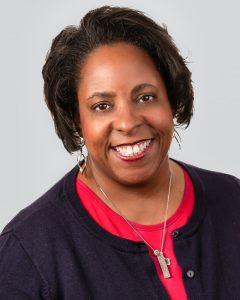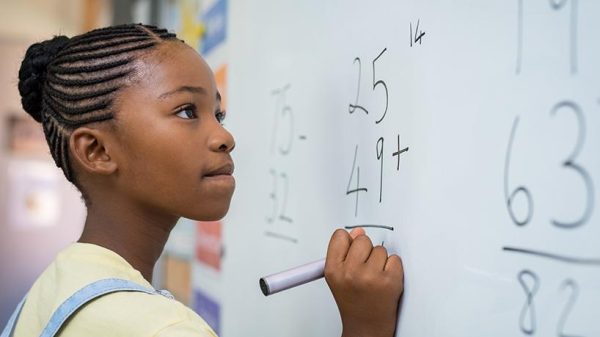The Redesign PD Community of Practice engages teams from 22 of the nation’s leading school districts and charter management organizations in identifying local professional learning challenges and creating scalable solutions. Learning Forward facilitates the community, where teams participate in continuous learning cycles to improve how they manage their professional learning systems.
Using new tools to measure the impact of professional learning and follow up with teachers in the classroom, the Syracuse City School District in New York is creating a more systematic design for improving teachers’ skills and knowledge. Read more about how the professional learning team is measuring teachers’ knowledge and skills and expanding learning opportunities.
In the past, the effectiveness of professional development in New York’s Syracuse City School District was measured primarily by collecting teachers’ reactions. But that level of data didn’t tell district leaders whether teachers actually learned anything or if they were using what they learned in the classroom.
But now, through a combination of exit tickets after professional learning sessions, a revised teacher reaction survey, and ongoing follow-up, there is a consistent process for delivering professional learning and measuring whether it is changing teacher practices.
“In the past, [professional development] providers were typically in silos and not connected with what each other was doing,” says Sarah Gentile, supervisor of the district’s fine arts department.
In addition to being involved in creating a consistent level of quality for professional learning, Gentile has also been among the first to try out a new walk-through tool to follow up with how teachers implement their learning. In this setting, she can respond to their questions on the spot.
“Their lesson plans are becoming increasingly thoughtful and include increased strategies for student lift and ownership,” Gentile says about the teachers she supports. “In the classroom, this is translating into deeper student engagement and rigor, and we’ve begun to collect evidence of increased student learning.”
The Syracuse district’s new approach to professional learning aims to personalize learning for educators and provide ongoing support in the classroom to make sure teacher practices are helping students meet the district’s performance goals.
“Right then and there, she has an opportunity to collaborate with the teacher and set personalized goals that relate to that specific educator’s needs,” says Francine Grannell, the district’s director of professional development. “This is a huge shift.”
The district will also continue to focus on strengthening the skills of those who provide professional learning. Maureen Sweeney, part of the team, is creating two online courses — one that focuses on the Standards for Professional Learning and another that supports the work of educators facilitating professional learning communities.
“We have tried to move away from the a la carte menu of [professional development] offerings and look toward courses that build upon one another as a continuum of learning,” Sweeney says.
‘Accelerating the growth in progress’
The next phase of the work, she adds, will be creating a stronger connection among teachers’ professional learning, impact on professional practice, and academic goals for students. The Syracuse professional development team is one of 11 districts focusing on measuring the outcomes of professional learning as part of the Redesign PD Community of Practice, facilitated by Learning Forward,
“We start with the growth we want to see and design professional learning that will map back to those goals,” Grannell says. “It’s not just about making progress; it’s accelerating the growth in progress.”
Improving teachers’ skills in personalizing learning for students is another area where this connection between teacher learning and teacher practice is taking place. The district has been offering digital badges, also called micro-credentials, focusing on the “art of digital teaching.” Grannell says that, as more digital badges are offered, they will be connected to growth and competency targets for educators with alignment to specific learning targets for students.
“We want teachers to have choice, while ensuring that we are building pathways that lead to improvement in educator effectiveness and student outcomes,” she says.
Manami Tezuka, the district’s supervisor of libraries, has been focusing on measuring teachers’ learning and skills in the area of personalizing learning for students.
“This work is more thoughtful and approaching the problem with a methodology that has the potential to cause systemic change,” Tezuka says. “[Professional development] quality and impact were never measured before outside of teacher reactions. Even these were not uniform or centrally managed. The collaboration of multiple stakeholders and accountability to complete work has helped us move forward in a meaningful way.”
The district’s Summer Summit to prepare for the 2017-18 school year is an example of how the district is collaborating with educators to provide students more equitable learning opportunities. The theme of the August event will be “Personalized Learning for Educators and Building Culturally Relevant Schools,” and it will feature topics such as restorative practices and family and community engagement.
District teachers are also taking more leadership roles in their schools and recently participated in a central New York state ECET2, which stands for Elevating and Celebrating Effective Teaching and Teachers. Another project focuses on how to create professional learning communities across the district and at the school level, Grannell says, adding that these various initiatives fit together and demonstrate “how we’re cultivating teachers and leaders.”
Participating in the Redesign PD Community of Practice with the other districts has helped the Syracuse team members move faster than if they had embarked on this work alone, Grannell says.
“I can connect with other members within the community across the country and immediately be connected with thought partners who can help problem solve and talk through improving upon the processes and tools we are designing and implementing,” she says. “Their lessons learned become our lessons learned, and we can get to our destinations faster.”








